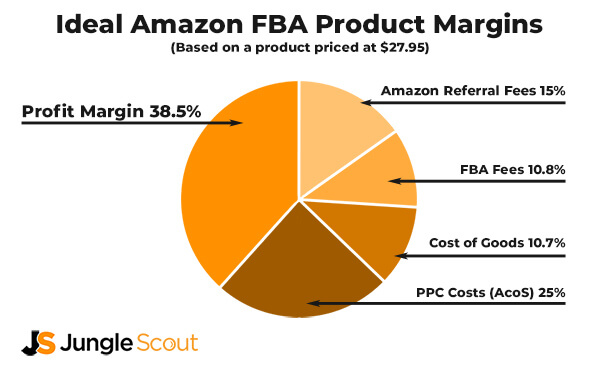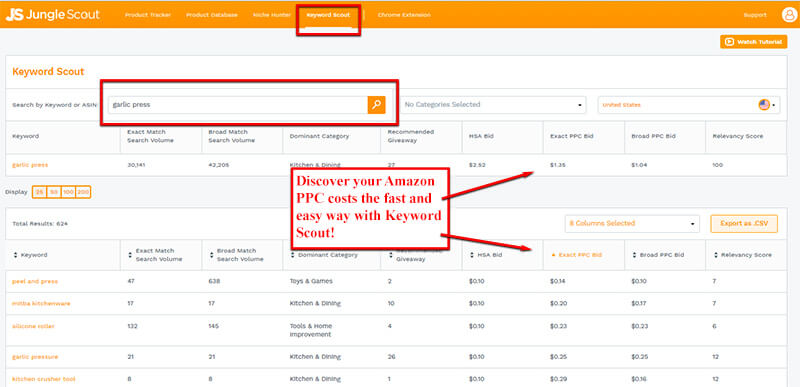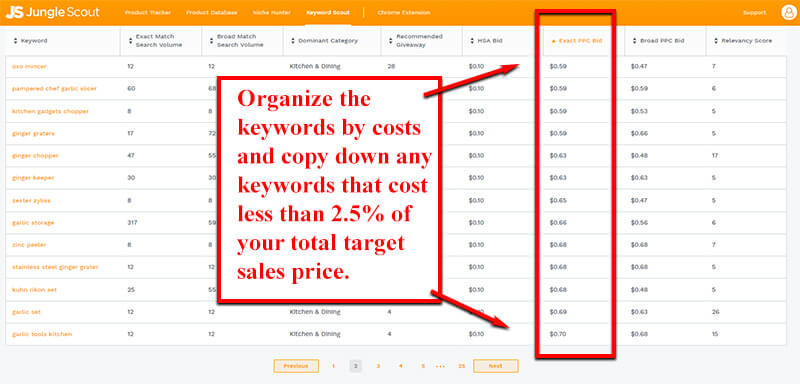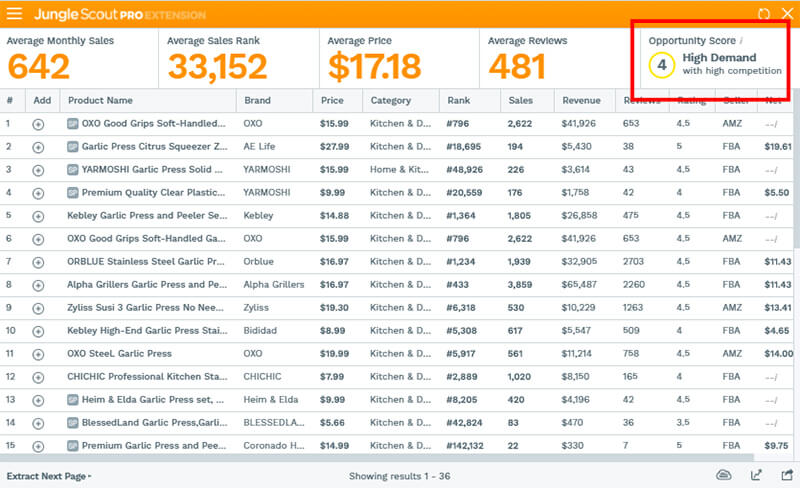Blog: The 2.5 Rule - How to Quickly Estimate Your Product's Amazon PPC Costs
The 2.5 Rule - How to Quickly Estimate Your Product's Amazon PPC Costs
Ever since sellers started selling through Amazon FBA and earning the lives they know they deserve, they’ve wanted to learn how to accurately predict the future profits. After all, what’s better than an investment or business where you know almost down to the penny how much you will earn? And thanks to applications like the Jungle Scout Chrome Extension and Jungle Scout Web App, tens of thousands of Amazon FBA sellers have done just that. However, one major cost estimation has long been a mystery: Amazon PPC costs.
Until now.
In this article, I’m going to teach you how to estimate your Amazon PPC costs using a fast and simple trick called the 2.5 Rule. This Rule will not only help you predict what your future Amazon PPC costs will be, but it will also give you an edge on your competition and potentially double your profits.
What is the 2.5 Rule?
The 2.5 Rule is a method of predicting Amazon PPC costs using a little math and a cool tool we call Keyword Scout. First, understand that it operates on a few assumptions:
- You are selling or going to sell a product on Amazon priced between $18-$30.
- The product has the typical Amazon conversion rate of 10%. That means for every 10 people who click on your product, 1 of those people makes a purchase.
- Your target ACoS is 25% of your sales price.
If you follow our guidelines for research and sourcing profitable Amazon FBA products, then all three of these assumptions should be correct.
Now that you understand these assumptions, here is how the 2.5 Rule works…
When researching keywords for your Amazon PPC ads, each keyword should cost no more than 2.5% of the product’s sales price.
For example: say you’re selling a long-handle garlic press for $27.95. You discover that the Amazon PPC costs to get your product to the first page of search results for the keyword “long-handle garlic press” is $0.56 per click. $0.56 per click is less than 2.5% of your sales price. Therefore, that is a good keyword to target.
Another example: you’re still selling the long-handle garlic press for $27.95. This time, you want to go for the broader keyword “garlic press” minus the “long-handle.” It’s a more competitive keyword, costing $1.23 per click. That’s 4.4% of your sales price. So that might not be the best keyword to target, especially if you want to get a healthy profit margin.

How is the 2.5 Rule calculated?
The math is quite simple. If you are selling a product on Amazon that has a 10 percent conversion rate, that means it takes on average 10 clicks to make a sale. If your target ACoS (actual cost of sales) is 25% of the total sales price, then your average Amazon PPC costs need to be 2.5% of the total sales price. Here’s the long version for the formula for calculating it.
The Long Version
PRICE x 25% = Target ACoS
Target ACoS / 10 Clicks = 2.5%
Amazon PPC Costs = 2.5% of Total Sales Price
But all you need to do is this:
The Short Version
PRICE x 2.5% = Your Target Amazon PPC Costs
In other words, simply multiply your product’s sales price by 0.025 and presto! You have your target Amazon PPC Costs.
How can I predict Amazon PPC Costs in advance?
The easiest way to predict Amazon PPC Costs is through Jungle Scout’s Keyword Scout tool. Keyword Scout actually gives you real live Amazon PPC Costs taken directly from Amazon.
Here’s how it works:
1 – Login to the Jungle Scout Web App.
2 – Once in the Web App, click on the Keyword Scout tab.
3 – In the search bar, enter a search term or ASIN that you wish to research Amazon PPC costs for.

4 – When the results load, review the keywords provided and the Amazon PPC costs.
It’s really that simple and only takes a few seconds.
How do I build a keyword list using the 2.5 Rule?
Now that you’ve used Keyword Scout to perform Amazon PPC Costs research, you’ll want to select the keywords that will not only get your product seen by more shoppers, but also keep your ACoS below 25%. IE less than 2.5% per click.
One easy way to build this list is by sorting the list of keywords provided by Keyword Scout in ascending order of Exact PPC costs. From there, simply start copying down (or exporting using the CSV tool) all of the keywords that are less than 2.5% of your product’s sales price.

For example, you can see that we have “garlic tools kitchen”, “garlic storage”, and “stainless steel ginger grater” as good potential keywords for our garlic press. Each has a cost per click less than 2.5% of our target $27.95 sales price.
How do I know if a product is too competitive using the 2.5 Rule?
Another benefit of using Keyword Scout and the 2.5 Rule is knowing whether or not a product is too competitive. You may have noticed from our list of keywords under 2.5% of our target sales price, those keywords have relatively low search volumes. This is probably a signal that garlic presses are far too competitive on Amazon. The Chrome Extension confirms this giving it an Opportunity Score of 4 “High Demand with High Competition.”

As a rule of thumb, you might try to get the sum of the search volume for each of your 2.5 Rule keywords to be 3,000+ monthly searches. Any less than that, and you might find it difficult to move inventory. Furthermore, try not to leverage the monthly searches on only one keyword, especially if it’s something obvious or short tail.
Can I raise my product’s price to meet the 2.5 Rule?
Obviously, raising your product’s price beyond your initial target sales price will make your margin for Amazon PPC Costs much wider. For example, if I raised my garlic press’ price by $10 to $37.95, that would make my target Amazon PPC Costs $0.95 per click. That’s a much easier margin to work with!
However, raising your price too high above your competitors’ prices might lower your conversion rate significantly. So, instead of selling a product every 10 clicks, it may take 15 to 20 clicks to sell your product. At that point, the 2.5 Rule doesn’t work as well.
I recommend keeping your sales price no more than 30% higher or lower than the average sales price. So if garlic presses are selling for $25 on average on Amazon, your price should be somewhere between $17.50 and $32.50.
A few more tips for estimating Amazon PPC costs.
Of course, the 2.5 Rule is a good basic rule of thumb and may not be a silver bullet for every seller. Here’s a few more things to consider when estimating your Amazon PPC costs:
Higher prices equals lower conversion rates.
Try to learn what your average conversion rate will be before pricing out your Amazon PPC ads. The lower your conversion rate, the more clicks it takes. Here’s a quick cheat sheet for conversion rates and clicks.
- 20% conversion rate = 1 sale per 5 clicks
- 15% conversion rate = 1 sale per 7 clicks
- 10% conversion rate = 1 sale per 10 clicks
- 5% conversion rate = 1 sale per 20 clicks
- 2% conversion rate = 1 sale per 50 clicks
Your target ACoS doesn’t have to be 25%.
Once you subtract your Amazon fees and costs of goods sold, you might have a larger gross margin to work with than others. In this case, you can always raise your target ACoS above 25%. Just remember that the bigger your ACoS is, the less profit you’ll make. So if you have a gross margin of 50% after fees and product costs and decide to target a 40% ACoS, that only leaves 10% for your profit margin!
Generate Amazon Keyword Reports.
Amazon keyword reports will help you get even more accurate details on costs per click and conversion rates. You should run these reports at least once a week for a few months after launching a product. You can find your keyword reports in Amazon Seller Central > Reports > Advertising Reports.
ABR – Always Be Researching.
Use Keyword Scout frequently to find new keywords. Remember, Keyword Scout generates a list of keywords based on keywords and ASINs that you enter in the search box. Eventually your keyword reports will direct you to your highest converting keywords. So, take those words and put them into Keyword Scout again. Bam! A whole new set of ultra-relevant keywords emerge, ready for you to put them into your Amazon PPC campaigns. Keep this up for a year and you’ll find yourself with a massive list of high converting, long tail keywords.
The seller who continues to do Amazon keyword research and track their Amazon PPC costs is the seller who ends up dominating their category and earning the highest profits.
How do I get Keyword Scout?
Keyword Scout is part of the Jungle Scout web app suite of tools. If you already have access to the Jungle Scout Web then good news. You already have Keyword Scout!
To learn more about the Jungle Scout Web App, click here.
